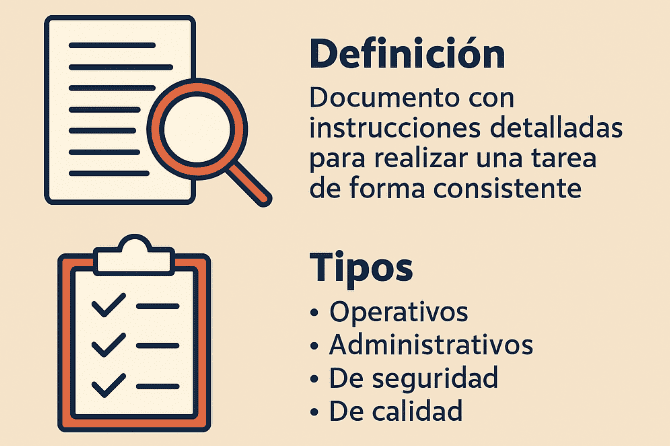A standard operating protocol (SOP), also known as standard operating procedure (SOP)A document that clearly and precisely details the instructions for performing a specific task or process within an organization. Its purpose is to ensure that everyone performing an activity follows the same steps, guaranteeing consistency, quality, and compliance with current regulations.
What is a standard operating protocol?
AI Agent for your business FREE
For a limited time only! Try it for free! SintonaiMaximize your sales, reduce your costs, and improve your customers' experience with our intelligent chatbots.
A standard operating procedure is a written guide that describes in detail how a task should be performed so that it is always done the same way, regardless of who performs it. These protocols are essential for:
- Standardize processes: They reduce variability and ensure consistent results.
- Guarantee quality: They improve the quality of the product or service by following predefined steps.
- Facilitate training: They help train new employees more quickly and effectively.
- Reduce errors: They reduce the likelihood of making mistakes or misunderstandings.
- Regulatory compliance: They ensure that operations comply with legal and industry regulations.
PNTs are used in a wide variety of industries, from pharmaceuticals to manufacturing, food, technology, and financial services.
What is a SOP?
A PNT either PCOS It's basically the same thing, although the terms vary by language and industry. Both refer to a document that describes in a structured way how a task or process should be performed to ensure consistency, quality, and safety.
A good PNT should include:
- Title and code: To easily identify the document.
- Aim: A brief description of the purpose of the procedure.
- Scope: Define which processes or tasks it applies to.
- Responsible parties: Who should follow the protocol.
- Materials needed: Required equipment, tools or supplies.
- Steps to follow: Detailed and sequential instructions.
- Safety measures: Precautions to consider.
- Review and approval: Date and signature of those responsible.
What is a standard operating process?
A standard operating process It is a set of standardized procedures and tasks designed to ensure that operations are performed efficiently, safely, and consistently. Unlike a simple protocol, a standardized process can include several SOPs that describe different parts of a workflow.
For example, in a food factory, the standard process for producing cookies might include SOPs for ingredient mixing, baking, cooling, packaging, and quality control.
AI Agent for your business FREE
For a limited time only! Try it for free! SintonaiMaximize your sales, reduce your costs, and improve your customers' experience with our intelligent chatbots.
How many types of PNT are there?
PNTs can be classified into several types, depending on the focus and industry:
| Type of PNT | Description | Example |
|---|---|---|
| Operations | They describe how to carry out specific tasks in production or service provision. | Assembly of electronic components. |
| Administrative | They define internal processes such as billing, document management, and customer service. | Customer billing in a dental clinic. |
| Security | Focused on the protection of personnel and equipment. | Proper use of personal protective equipment (PPE). |
| Quality | They ensure that products meet specific standards. | Quality testing in drug manufacturing. |
| Maintenance | They specify how to maintain equipment or facilities in good condition. | Preventive maintenance of industrial machinery. |
Advantages of using PNT
Implementing standardized work protocols offers numerous benefits, including:
- Consistency: Ensures that tasks are always performed in the same way.
- Improved efficiency: Reduce downtime and human errors.
- Facilitates auditing: Allows you to easily check whether best practices are being followed.
- Regulatory compliance: Helps to comply with legal regulations and quality standards.
- Improvement in training: Makes it faster and easier to train new employees.
💡 Tip: For an SOP to be effective, it must be clear, accurate, and regularly updated to reflect changes in processes or regulations.








